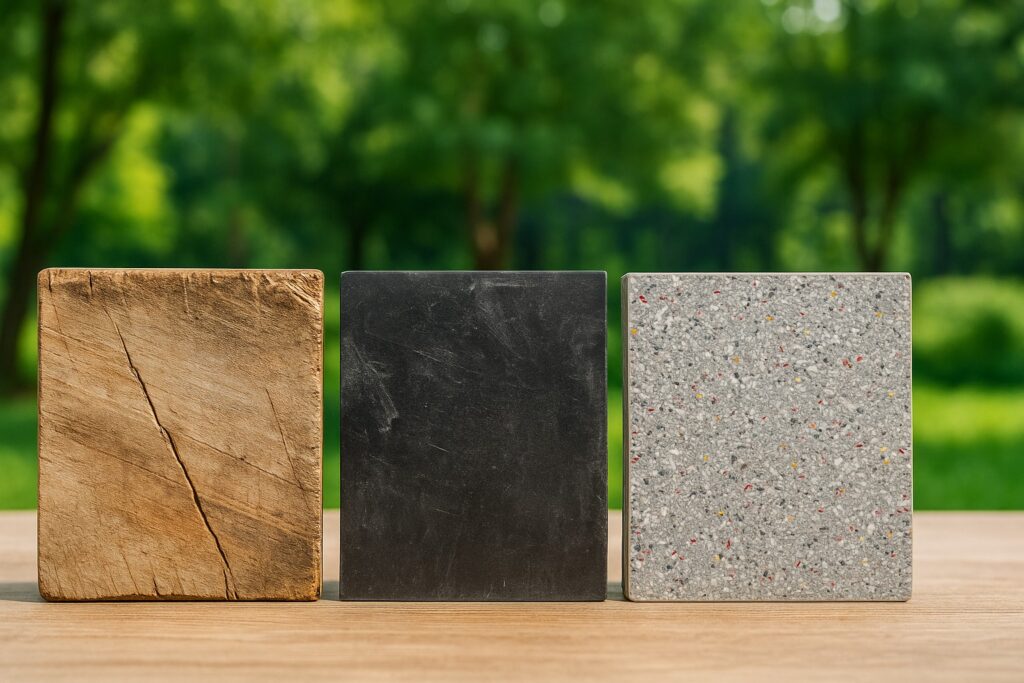
For years, the conversation around shuttering materials has been stuck between plywood vs. steel vs. plastic. Sustainability claims are often repeated without context — plastic is recyclable, plywood is natural, steel lasts longer.
None of these statements mean anything unless we look at actual environmental impact across the full construction cycle.
This article breaks down the real environmental implications of switching to plastic shuttering panels drawing from field behaviour, lifecycle data, and insights from manufacturer like Rajratan group who work directly with industrial-grade composites.
1. The Unexpected Truth: Plywood Is Not The “Eco-Friendly” Option
Plywood is often considered a natural, renewable product — and in furniture, that’s true.But shuttering plywood is a completely different category:
- It uses phenolic resins and formaldehyde-based glues.
- It must be coated with chemicals to resist water.
- It lasts only 10–12 uses in real construction conditions.
- After use, it cannot be recycled — it becomes hazardous waste.
Every square foot of shuttering plywood generates:
- Tree loss
- Chemical waste
- High water usage
- Short-lived products that end up in landfills
This is exactly why the transition toward engineered plastic boards began in the first place.
2. The Real Environmental Gain: Lower “Material Turnover Rate”
The biggest sustainability win of plastic shuttering isn’t what people assume.
It’s not “plastic is recyclable.”
It’s not “plastic lasts longer.”
It’s something far more important:
You reduce the number of boards your project consumes.
This is called Material Turnover Rate, and it’s one of the construction sector’s biggest hidden environmental drivers.Let’s compare real usage:
Material | Average Field Repetitions | Boards Needed for 100 Cycles |
Plywood | 10–12 cycles | 8–10 boards |
Basic PVC | 30–40 cycles | 3–4 boards |
PAC ® Plastic Shuttering | 80–100+ cycles | 1–2 boards |
This single metric changes everything:
- Fewer boards manufactured
- Fewer boards transported
- Fewer boards dumped
The environmental savings come from avoiding unnecessary production — not from the plastic itself.
3. Why “Recyclability” Alone Means Nothing — Unless It’s Industrial-Grade
Most plastic shuttering on the market is made from:
- Municipal waste plastic
- Mixed polymers
- Paper fibres
- Moisture and contaminants
This material is weak and cannot be recycled back into shuttering.
Rajratan group use industrial-grade pre-consumer plastic, which is:
- Clean
- Mechanically strong
- Consistent in density
- Recyclable back into industrial products
This matters because:
- Only stable materials can be part of a true circular system.
- Clean industrial plastic can be reprocessed without chemical degradation.
- Composite shuttering boards made from this material maintain strength across cycles.
This is where Rajratan’s model becomes meaningful — not marketing:
- Old shuttering boards are collected
- Re-processed
- Converted into planters, doors, utility products
This is recycling that actually works, not aspirational recycling.
4. Better Concrete Finish = Smaller Environmental Footprint
Most people overlook this completely.
Material choice affects:
- How smooth the concrete casts
- Whether plastering is needed
- How much cement is consumed
- Whether rework is required
When shuttering fails (warps, absorbs water, delaminates), the environmental impact increases because:
✔ More cement is used
✔ More sand is used
✔ More labour is used
✔ More energy is used in grinding and plastering
Smooth, non-absorbent engineered boards eliminate this waste.
This is not a small environmental benefit — it affects the entire structure’s embodied carbon.
5. Water Savings — A Hidden but Major Environmental Benefit
Plywood absorbs water → breaks → gets thrown.
PAC® Plastic shuttering absorbs nothing → uses dramatically less water for cleaning.
This directly reduces:
- Water usage at curing sites
- Contaminated runoff
- Water needed for maintenance
In states facing water stress (Madhya Pradesh, Rajasthan, Maharashtra), this is not a minor benefit.
Conclusion: Sustainability Is No Longer About the Material — It’s About the System
Switching to plastic shuttering panels is not about choosing “plastic instead of wood.”
It’s about choosing a higher-performing, lower-turnover, recyclable system that reduces:
- Raw material extraction
- Waste generation
- Transport emissions
- Concrete rework
- Water usage
- Landfill pressure
Rajratan Group contribute to this shift not because plastic is perfect — but because better-engineered materials create better environmental outcomes when used over long cycles.
To get more information about PAC® Plastic Shuttering Board read this article-
- Phone: 0731 4045302
- Mobile: +91 96857 27927
- Email: info@rajratan.in
Get In Touch With Us!
Phone
info@rajratan.in
Address
123-124 First Floor, Shastri market Indore 452 007, M.P. India